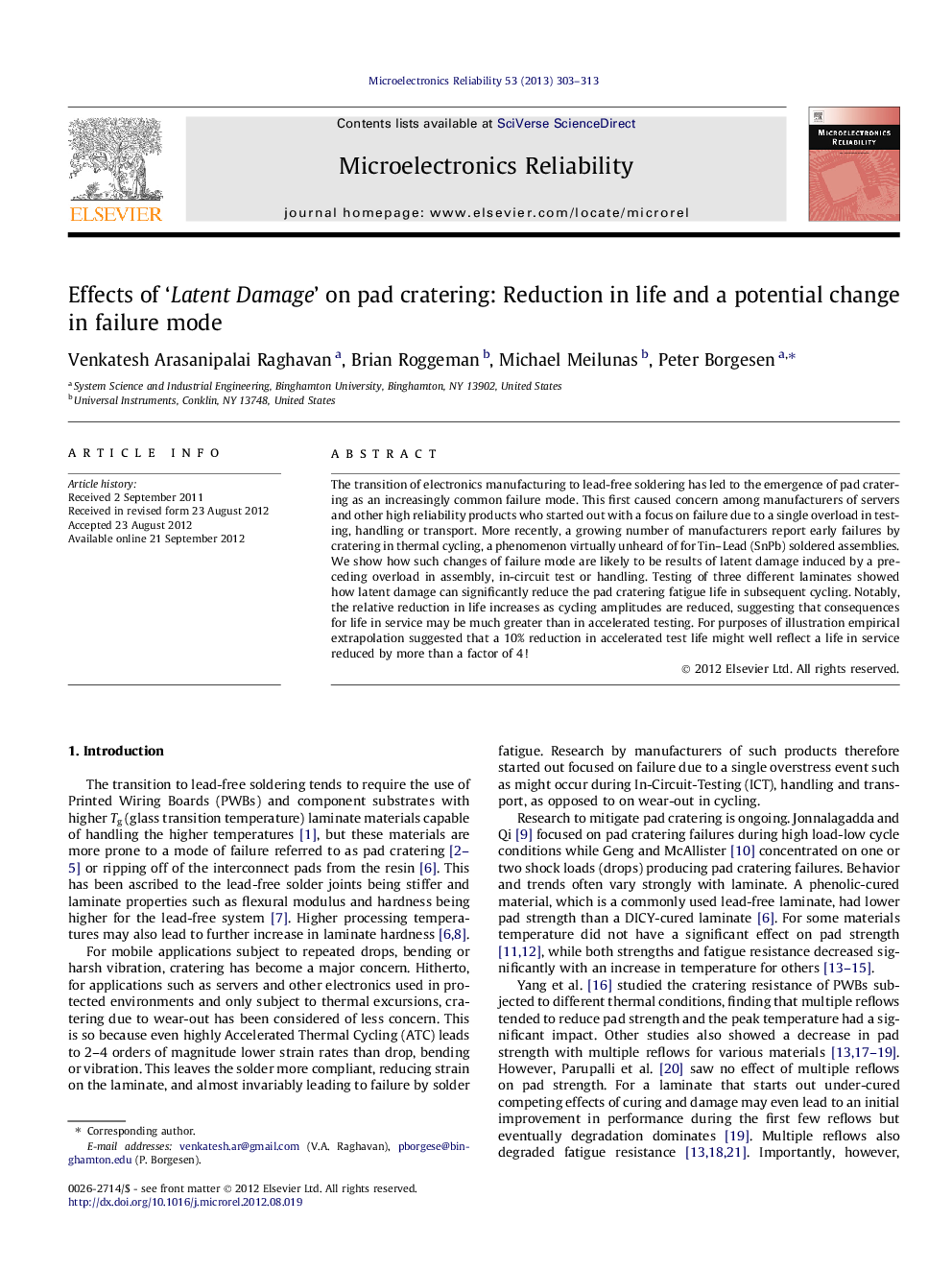| Article ID | Journal | Published Year | Pages | File Type |
|---|---|---|---|---|
| 545034 | Microelectronics Reliability | 2013 | 11 Pages |
The transition of electronics manufacturing to lead-free soldering has led to the emergence of pad cratering as an increasingly common failure mode. This first caused concern among manufacturers of servers and other high reliability products who started out with a focus on failure due to a single overload in testing, handling or transport. More recently, a growing number of manufacturers report early failures by cratering in thermal cycling, a phenomenon virtually unheard of for Tin–Lead (SnPb) soldered assemblies. We show how such changes of failure mode are likely to be results of latent damage induced by a preceding overload in assembly, in-circuit test or handling. Testing of three different laminates showed how latent damage can significantly reduce the pad cratering fatigue life in subsequent cycling. Notably, the relative reduction in life increases as cycling amplitudes are reduced, suggesting that consequences for life in service may be much greater than in accelerated testing. For purposes of illustration empirical extrapolation suggested that a 10% reduction in accelerated test life might well reflect a life in service reduced by more than a factor of 4!
